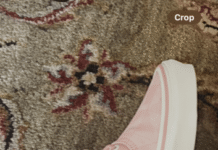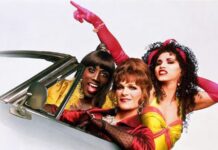
“The locals remained strangers, objects to study
and learn of their tendencies so as to maximize my wave count but
never comrades in surf.”
There is a framed photo on my home-office desk of a
glassy, overhead peeling wave. The picture is grainy and
sepia-toned, suggesting an early morning fog.
There’s a surfer dropping into the wave, and one other guy
sitting out just beyond the peak. A little further behind him is a
fishing trawler, its bow pointed out toward a misty sea.
The wave has New England vibes, the trawler dredging up memories
of thick fishermen beards and knit wool caps, the empty lineup
suggesting a break way off the beaten path, the surfers’ all black
silhouettes implying 4/3mm neoprene from head to toe, the clean,
solid groundswell reminiscent of 1980s Surfer mag features
spotlighting cobblestone shorelines and lobster dinners.
You would never know the image instead was taken at arguably the
most crowded, VAL-filled wave on the East Coast, the perpetual host
of the oldest continuously-run surf contest in the world (ECSC), a
place in the Mid-Atlantic beloved by its regulars and reviled by
just about everyone else, a spot that is derisively described as
the Right Coast version of Doheny.
I surfed Virginia Beach’s First
Street for the first time in 1991, nearly three decades before the
picture was taken.
I was fresh out of Florida, hot off a run of memorable surf
trips, desperate for a spot I could surf before, after and in
between my college summer jobs.
I actually premiered my Virginia Beadch surf journey at
pre-parking ban Croatan, a spread of beach just south of Rudee
Inlet (First Street breaks off the jetty on the north side of
Rudee) adjacent to a Tiffany-encrusted neighborhood.
Croatan features a tidy collection of sandbars and multiple
break options — i.e., it’s a place where with a little luck you
could find a lineup to yourself from time to time.
In those pre-Surfline days I knew about First Street from what
(the relatively friendly) Croatan locals told me — stay away, the
place is jam packed even on light days, everyone’s an asshole, the
wave isn’t worth the hassle, etc.
But seemingly every time I drove over the Rudee Inlet bridge, I
could see lines coming off the north side of the jetty, even on
days when Croatan was mostly flat.
So one late summer day, I parked on the loop, waxed up, walked
over the boardwalk, and paddled my 18” thruster out into a sunny
lineup featuring a mediocre 2-3 foot groundswell.
The first thing I saw was some guy coming down the line and
pulling a sliding 360, a maneuver that counted as fairly
progressive in those pre-aerial days.
Out in the lineup, the chatter was fast and thick among a
cluster of regular shortboarders who clearly had spent a lot of
time together. The chatter crew dominated both the conversation and
the sets, leaving everyone else scrounging for morsels.
I didn’t blame them. Without some regulation, an already chaotic
lineup would have descended into pure mayhem.
But it wasn’t for me. I took my Floridian talents back south to
Croatan and didn’t venture north across the inlet again that
summer, or the next, or the next.
The years passed. I moved away for more jobs — and even more
school — before eventually finding myself back in the region in the
early to mid aughts.
By then, the city had cracked down on Croatan parking in
response to the constant complaints from uptight neighbors about
wetsuit-stripping surfers exposing themselves in front of the
neighbor’s multi-million dollar villas.
With Croatan on parking ordinance lockdown, I bounced around to
some alternate waves, mostly on the North End, which is to say
pretty much any spot north of 42nd Street. But the sandbars were
fickle, and my available windows were tight — I didn’t have the
luxury of checking three to four spots before paddling out.
More and more I found myself drawn to First Street, by far the
most consistent spot in the area, a place that could turn even a
whisper of windswell into a rideable wave.
On its best days, the wave lines up and features a long, running
righthander that can stretch from out beyond the jetty all the way
to the sand.
Plus, it doesn’t hurt that the current running out to sea
adjacent to the jetty acts like an aquatic conveyor belt to the
lineup, usually with nary a duck dive required, even on overhead
days.
After a few tentative test runs, I gave in to the jetty’s siren
song. From 2010 through 2019, when in town I surfed First Street
nearly exclusively.*
In the early days of that stretch, I figured out where to sit on
my 5-10 Jesse Fernandez fish, either far enough inside the
by-then-ubiquitous longboard crew to catch the smaller set waves
that snuck underneath them or up the beach enough to catch the wide
sets that hit the second peak north of the jetty proper.
I also started hitting the lineup before first light. It was
nearly impossible to beat the hardest core of the local crew into
the lineup, but you could usually find at least an hour or so of
relatively uncrowded surf before the crowd filled in.
And winter helped. In the dark days of January and February,
water temps would dip into the low 40s (F), and the crowd would
shrivel up almost as much as your testicles.
As time passed, I eventually succumbed to the virus that
afflicts many surfers in their 40’s, or at least those who find
their athletic prowess slipping and yearn for a way to catch more
waves in crowded lineups, especially lineups dominated by old
school long boarders — I shelved my shortboards and began heading
out on craft that maximized my dwindling paddle power and gave me a
fighting chance against the increasingly longboard-dominant lineup,
first on an old school single fin log I picked up off Craigslist,
and later on another Jesse Fernandez shape, this time a
mid-length.
All of which is how I found myself in the right spot for waves
like the one depicted in that grainy photo on my desk.
Years of paddling out, learning the lineup, tracking the sandbar
back and forth across the few hundred yard playing field
encompassing the break, sometimes taking off outside the tip of the
jetty, sometimes tracking north a few dozen yards, sometimes
sitting right on top of the jetty and paddling into the refraction
off the rocks (a la Sebastian Inlet), but in all events constantly
chasing the ever-mutating dimensions of sand bottom contours and
swell direction and dredging projects.
And I did it all in virtually complete anonymity.
I never considered myself a First Street local — in my surfing
mind I never permanently left Florida.
I got to know the local faces, but they remained strangers,
objects to study and learn of their tendencies so as to maximize my
wave count but never comrades in surf.
Selfish, I know.
There was Andie L, who’s been surfing the zone since the 1960s
and somehow still always caught the best waves of the day (so long
as the swell wasn’t overhead, in which case he wouldn’t venture
out).
There’s the shortboarder who looked (and sounded) like Thomas
Haden Church’s long lost twin.
There’s the younger longboard crew, the locally famous group who
were veterans of the contest circuit and approached the lineup like
one imagines Caesar or Cleopatra might have if the denizens of the
ancient Mediterranean surfed.
There’s the older longboard crew, the gritty blue collar workers
with salt perpetually crusted on their mustaches, the ones who were
always first in the lineup no matter how early I showed up, and the
ones who inevitably (and deservingly) grabbed the majority of the
best set waves.
There was even the world’s only respectable SUP-er, a very fit
young Asian guy who gave away more than his fair share of waves,
stayed out of people’s way, and generally ripped when he did take
off.
And all of it was (and is) documented by the venerable water
photog legend, Ed Obermeyer, a sexagenarian who nonetheless would
shoot from the water during nearly every decent swell event.
Sure, there were assholes, and at times the lineup became too
unwieldy to navigate no matter how familiar the terrain.
But over time it became like a second home, a familiar place
that guaranteed a few rides on the worst days and on the best days
made you feel like you had stumbled upon one of the Mid-Atlantic’s
best kept secrets.
With the early morning sun just peeking over the ocean horizon,
a pod of dolphins lazily rolling by, and a decent bit of energy
moving the water underneath, you could forget about the rest of the
world, if only for an hour or two.
I left the area in 2019. It’s now been several years since I
last paddled out at First Street. All of these faces and scenes are
fading away.
In the years since, I’ve put in time at multiple spots far
removed from the East Coast and been reminded anew of what world
class lineups feel like.
But lately those fading dawn patrol memories have been rekindled
by the IG algorithm, which has been flooding my feed with
VB-centric surf content.
There’s the Wavegarden Atlantic Park pool that’s due to open
this summer a few blocks up from First Street and hopefully give
the wannabe rippers and countless VALs who swarm the area from
Memorial to Labor Day an excuse to stay out of the local ocean
lineups.
There’s a book project sponsored by ex-professional Virginia
Beach surfer Jason Borte, which is also due for release this
summer.
Titled Virginia is for Surfers — a play off the long-standing
Virginia tourism slogan, “Virginia is for Lovers” — it’s being
flacked as a coffee table type edition with lots of photos and
words discussing Virginia’s long love affair with surfing
(here’s the Kickstarter link, if —
unlike every BG commenter ever — you are so
inclined.)**
And then, of course, there’s the East Coast Surfing
Championships (sponsored by Coastal Edge), the venerable contest
that runs every August and is basically the biggest surf-themed
beach party anywhere in the country not named Huntington.
But I don’t recommend any of it (except maybe tossing a couple
bucks Borte’s way).*
Instead, just skip all the social media hype.
Wait for winter.
Meander down to the Rudee Inlet parking loop before dawn.
Squeeze your yawning flesh into a hooded 4/3 (or 5/4), pull on
your lobster gloves and 5mm booties.
Take the conveyor belt out beyond the jetty and sit a little
wide of the OG longboard crew.
Enjoy the sunrise. Keep your eyes peeled for dolphins.
And if you haven’t been a prick in this life or the last, the
wave gods might smile upon you.
With any luck, they’ll send you a Jetty Dreamer — a perfect east
coast nugget that will transport you far from wave pools, and
contest raves, and boardwalks crowded with tourists, and bring you
back to the essence of why we all became obsessed with this silly
little pastime to begin with.
*To be clear, the waves in VB generally don’t hold a candle to
spots on the OBX, which on the right day feature some of the better
beach breaks anywhere outside France.
**I don’t know Borte, have never met him, and I have no
connection to his book project whatsoever.





